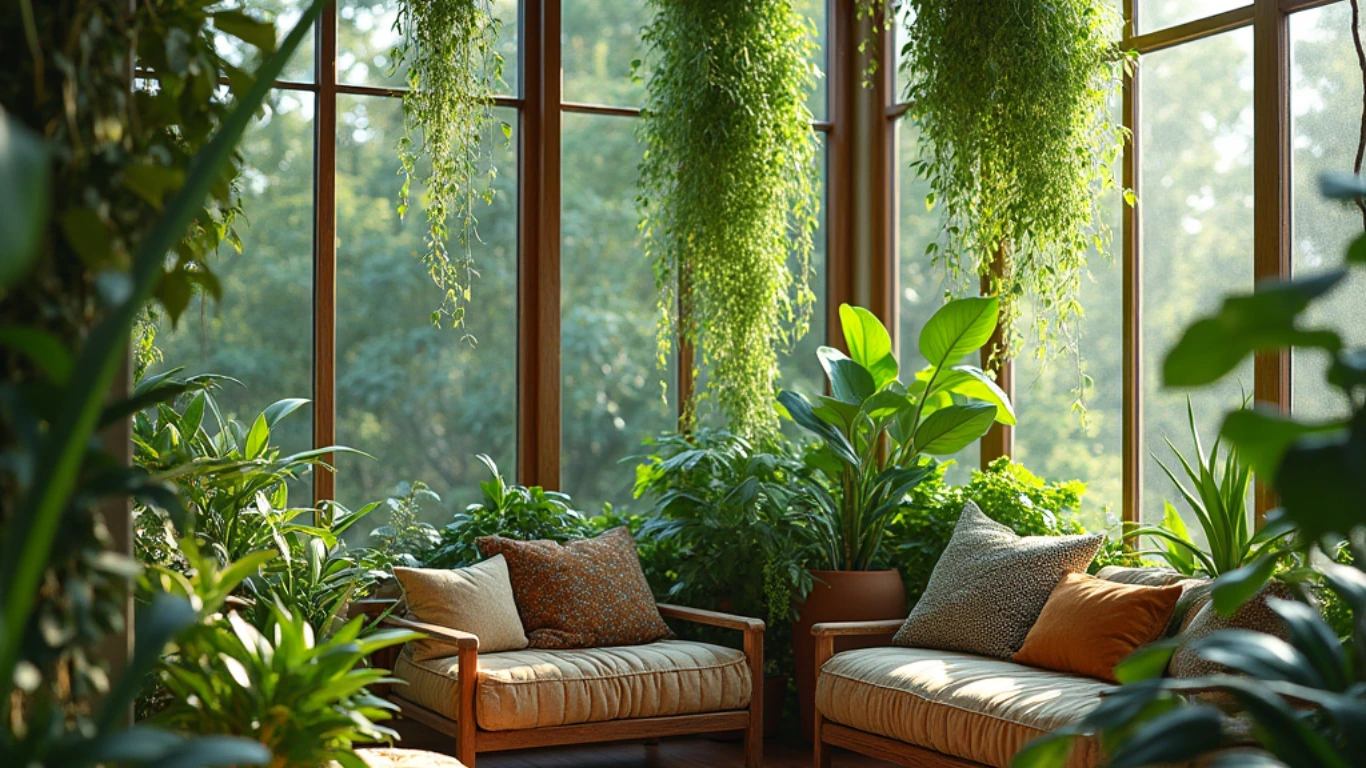Table of Contents
Introduction
A thriving indoor jungle is every plant enthusiast’s dream, but achieving those lush, cascading vines and skyward-climbing stems often requires more than just sunlight and water. Enter the moss pole for plants, a versatile tool that mimics the natural support structures found in tropical rainforests. This vertical gardening marvel is designed to provide climbing plants with the ideal environment to grow tall, strong, and vibrant.
The features of a plant support pole are simple yet transformative: a sturdy, moisture-retentive core wrapped in natural materials like sphagnum moss or coco coir. The advantage? It encourages plants to climb upward, promoting healthier growth patterns and allowing aerial roots to latch on securely. The benefits are unmistakable—larger leaves, enhanced structural integrity, and a stunning display of greenery that can turn any corner of your home into an exotic oasis.
Whether you’re nurturing a Monstera Deliciosa or training a Pothos to scale its heights, a moss pole for plants unlocks the full potential of your greenery. It’s not just a support system—it’s a gateway to achieving the flourishing vertical garden you’ve always envisioned. Ready to elevate your plant care routine? Let’s explore how this game-changing tool can transform your indoor plant collection.
Understanding Moss Poles

A moss pole for plants is a vertical support structure designed to mimic the natural habitat of climbing plants. Typically made from a sturdy core wrapped in moisture-retentive materials like sphagnum moss or coco coir, it provides an ideal surface for aerial roots to latch onto. As plants like Monstera and Pohtos grow, the plant support pole encourages upward growth, promoting larger leaves and stronger stems. Additionally, the pole helps maintain humidity around the plant’s roots, fostering healthier development. By replicating the support found in rainforests, a moss pole transforms your indoor greenery into a lush vertical display.
Key Benefits of Using a Moss Pole for Your Plants
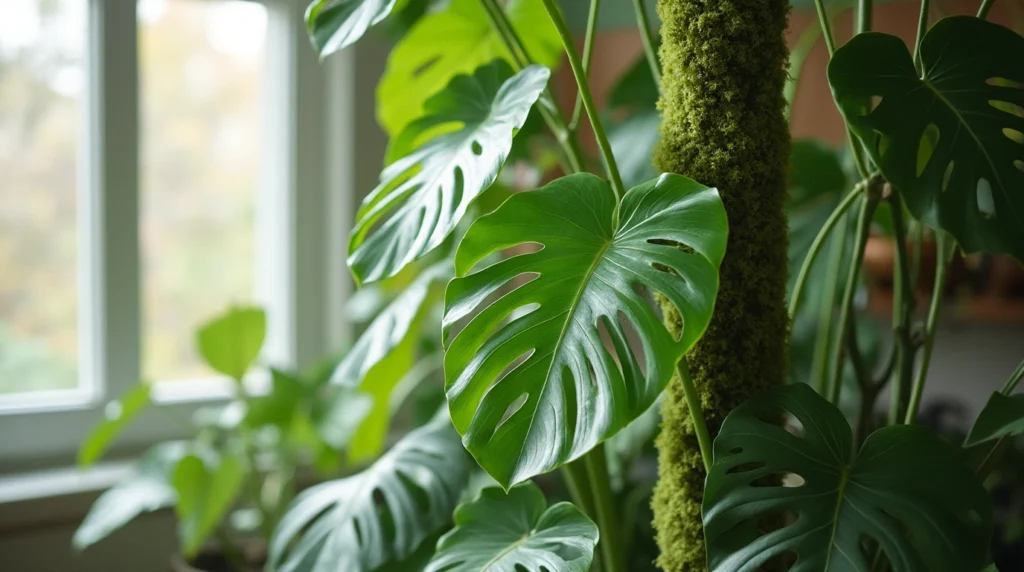
Using a moss pole for plants offers numerous advantages for plant health and aesthetic appeal. First, it encourages vertical growth, allowing climbing plants to develop stronger stems and larger leaves. The plant support pole for plants also provides a natural support system, replicating the conditions of a plant’s native environment. This helps plants like Monstera and Philodendron to thrive. Additionally, it fosters the growth of aerial roots, ensuring proper hydration and nutrient absorption. The added humidity around the plant’s roots improves overall vigor, making a moss pole for plants an essential tool for creating a lush, thriving indoor garden.
Characteristics of Plants That Thrive with Moss Poles
Plants with aerial roots thrive when supported by a moss pole for plants. Discover which plant characteristics benefit most from this essential growth aid.
Climbing and Vining Nature
The climbing and vining nature of plants is a fascinating adaptation that allows them to reach sunlight and maximize growth. Plants like Monstera, Pohtos, and Philodendron exhibit this behavior, producing aerial roots that seek support for vertical expansion. A moss pole for plants is the perfect companion, offering a sturdy structure that mimics natural tree trunks. By attaching their roots to the pole, these plants grow healthier, with larger leaves and stronger stems. This upward growth not only enhances the plant’s natural beauty but also saves space, making a moss pole for plants an essential tool for indoor gardening enthusiasts.
Root Structures and Growth Habits
The root structures and growth habits of climbing plants are uniquely adapted for vertical environments. These plants develop aerial roots designed to anchor and absorb moisture from their surroundings. When paired with a moss pole for plants, these roots find an ideal surface to cling to, promoting stability and enhanced nutrient uptake. This natural growth habit supports vigorous development, resulting in lush foliage and robust stems. A moss pole for plants not only replicates the plant’s native environment but also encourages healthier, more efficient growth. Understanding these growth patterns can help plant enthusiasts optimize their care routines and create thriving green spaces.
Light and Humidity Preferences
Climbing plants often thrive in bright, indirect light and environments with high humidity levels. These conditions mimic their natural habitats, such as tropical rainforests, where light filters through the canopy and moisture abound. Pairing these plants with a plant support pole enhances their growth by maintaining humidity around their aerial roots. The moist surface of the pole not only supports their climbing habit but also ensures consistent hydration. With the right balance of light and humidity and the addition of a moss pole, your climbing greenery will flourish, showcasing vibrant foliage and robust, healthy growth patterns.
Monstera Deliciosa
The Monstera Deliciosa, with its iconic split leaves, flourishes when paired with a moss pole for plants. The pole offers vertical support and fosters healthy, vibrant growth in any indoor space.
Why the Swiss Cheese Plant Loves Moss Poles
The Swiss Cheese Plant, also known as Monstera Deliciosa, thrives when provided with a moss pole. This climbing support mimics the tree trunks found in its native tropical habitats, allowing its aerial roots to attach and draw in essential moisture. By encouraging vertical growth, a moss pole for the plant helps the Monstera develop its signature fenestrated leaves, enhancing its striking appearance. The pole also promotes better hydration and nutrient absorption, which is vital for robust and healthy growth. For anyone seeking to elevate their plant care routine, pairing this iconic plant with a plant support pole is a game-changer.
Tips for Training Monstera to Climb
Training your Monstera to climb requires patience and the right tools. Start by providing a sturdy moss pole, as it mimics the natural support found in rainforests. Gently tie the stems to the pole using soft plant ties, ensuring they have room to grow. Position the plant support pole vertically and secure it in the soil for stability. Regularly mist the pole to keep it moist, encouraging aerial roots to attach and thrive. Rotate the plant for even sunlight exposure, and watch as your Monstera transforms into a magnificent, upward-growing centrepiece with lush, dramatic foliage.
Philodendron Species
Philodendron species, known for their vibrant foliage and climbing nature, flourish with a plant support pole, promoting vertical growth, healthier roots, and a visually stunning indoor jungle aesthetic.
Popular Philodendrons for Moss Poles: Heartleaf, Brasil, and Others
Popular Philodendrons like the Heartleaf and Brasil are ideal candidates for growing plants on a plant support pole. Their vining nature thrives with vertical support, encouraging lush, trailing growth. The Heartleaf Philodendron, with its heart-shaped leaves, attaches effortlessly to a moss pole for plants, creating a dramatic vertical display. Similarly, the Brasil variety, known for its variegated green and yellow leaves, flourishes when provided with proper support. As both plants are natural climbers, they benefit from the moist surface of a moss pole for plants, promoting healthier roots and more vigorous growth. This support system elevates their aesthetic appeal and health.
How to Encourage Philodendron Growth on a Moss Pole
Encouraging Philodendron growth on a moss pole for plants requires proper care and attention. First, position the moss pole upright in the soil, ensuring it’s securely anchored. Gently tie the plant’s stems to the pole using soft ties, allowing the Philodendron’s aerial roots to latch onto the moist surface. Regularly mist the pole to maintain humidity, which supports root development and overall plant health. Ensure the plant receives indirect light, as this promotes vigorous growth. Over time, the Philodendron will naturally grow upward, its leaves becoming larger and more vibrant as it attaches to the plant support pole.
Pothos Varieties
Pothos varieties, such as Golden and Marble Queen, thrive with a plant support pole, which encourages their natural climbing tendencies and enhances their vibrant foliage as they grow upward and spread.
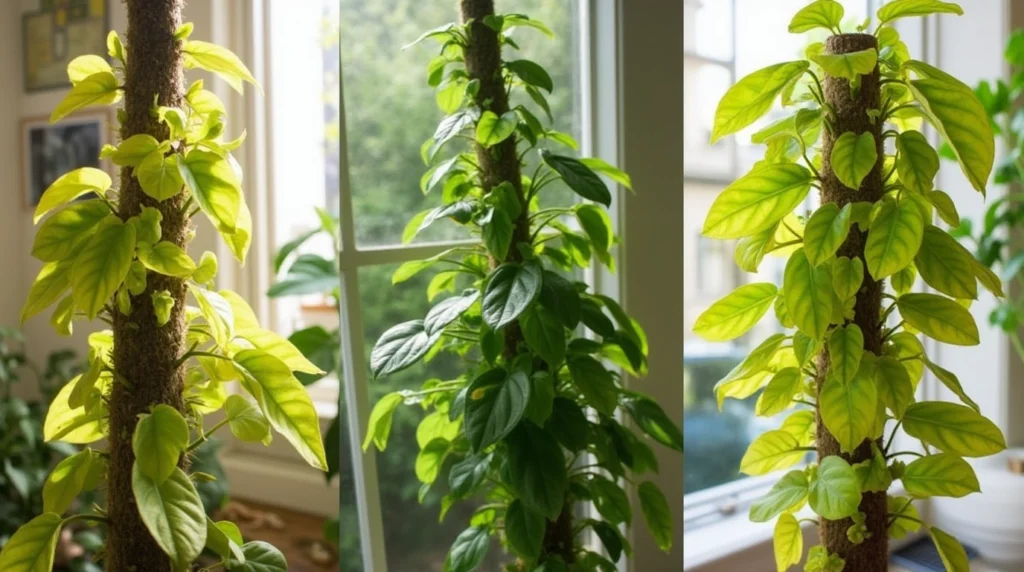
Best Pothos Types for Moss Poles: Golden, Marble Queen, and Neon
The Golden, Marble Queen, and Neon Pothos are some of the best types for growing on a moss pole for plants. The Golden Pothos, with its striking yellow-green variegation, thrives when given support to climb. Similarly, the Marble Queen Pothos, known for its white and green marbled leaves, flourishes on a moss pole for plants, producing strong, vibrant growth. The Neon Pothos, with its bright chartreuse leaves, adds a pop of color while climbing, benefiting from the vertical structure the pole provides. All three varieties appreciate the added humidity and support, making them perfect candidates for a climbing pole.
Practical Care Tips for Pothos on Moss Poles
Caring for Pothos on a moss pole requires attention to moisture, light, and support. Keep the moss pole damp, misting regularly to encourage the plant’s aerial roots to cling. Ensure the Pothos receives bright, indirect light, as this helps promote healthy growth. Gently tie the stems to the pole using soft ties, avoiding tightness that could hinder growth. Rotate the plant occasionally to ensure even development and prevent leaning. Regularly check the climbing pole for signs of wear or dryness, replenishing moisture as needed to maintain an ideal environment for thriving, vertical growth.
Syngonium (Arrowhead Plant)
The Syngonium, or Arrowhead Plant, thrives on a moss pole for plants, encouraging its climbing nature and enhancing its stunning, arrow-shaped leaves. It flourishes with vertical support and humidity.
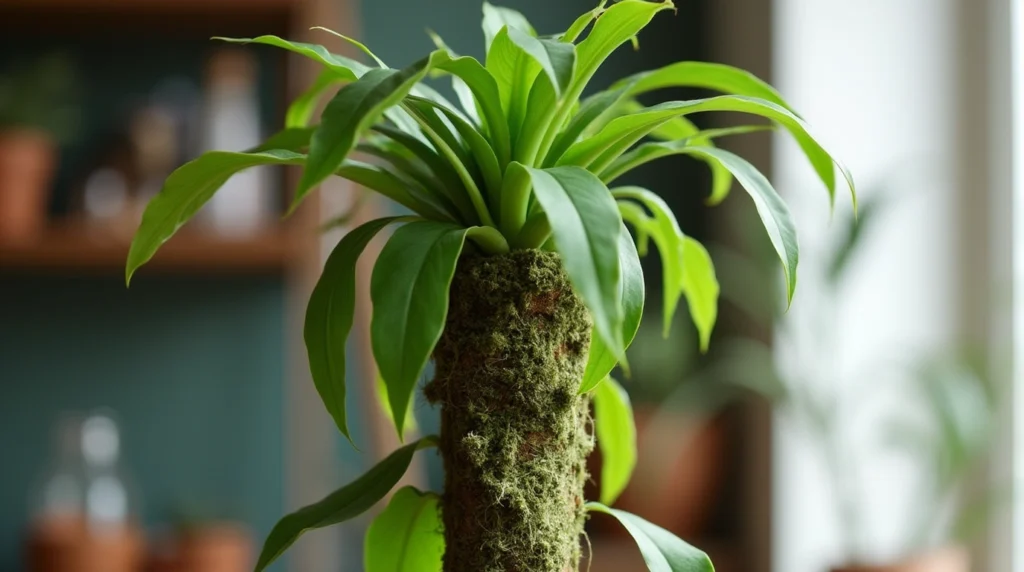
Why Arrowhead Plants Benefit from Moss Poles
Arrowhead plants, or Syngonium, benefit greatly from a moss pole due to their natural climbing behavior. As they grow, they send out aerial roots that latch onto the moist surface of the pole, promoting stronger, healthier growth. A climbing pole helps support the plant’s vertical growth, allowing it to spread its beautiful, arrow-shaped leaves more fully. By providing the necessary humidity and structure, the moss pole encourages faster development, vibrant foliage, and a lusher appearance. This support system mimics the plant’s natural environment, fostering optimal growth and overall plant health.
Maintaining Compact and Attractive Growth with a Moss Pole
Maintaining compact and attractive growth is easy with a moss pole for plants. By providing vertical support, the pole encourages upward growth, keeping your plant’s foliage neat and structured. As the plant climbs, the moss pole for plants facilitates the development of strong stems and healthy roots. This helps prevent the plant from sprawling or becoming leggy. Regularly misting the pole ensures the ideal humidity levels, which in turn promotes lush, vibrant growth. With the right care, a moss pole for plants helps maintain both the beauty and compact form of your plants, giving them a polished, controlled appearance.
Hoyas (Wax Plants)
Hoyas, or wax plants, thrive on a plant support pole for plants, allowing their long, trailing vines to climb. This support encourages lush growth and enhances their stunning, waxy leaves and flowers.
Climbing Habits of Hoyas That Love Moss Poles
Hoyas, or wax plants, possess a natural climbing tendency, making them ideal candidates for a moss pole for plants. Their long, trailing vines eagerly reach for vertical surfaces, seeking support. A moss pole for plants mimics the plant’s native environment, providing the perfect structure for them to climb. As the vines latch onto the moist surface of the pole, they develop strong, aerial roots that support vertical growth. This climbing behavior not only strengthens the plant but also encourages denser foliage and more blooms. With the proper care, a moss pole for plants allows Hoyas to thrive and display their stunning, waxy leaves and flowers.
Supporting and Training Hoyas for Optimal Growth
Supporting and training Hoyas on a moss pole for plants is essential for their optimal growth. As climbers, Hoyas naturally seek vertical structures to anchor their vines. By using a moss pole for plants, their long stems can wrap around the pole, promoting healthy aerial root development. To encourage upward growth, gently guide the vines along the pole, securing them with soft ties or clips. Regular maintenance, such as misting the pole to retain moisture, helps stimulate root growth. This support not only enhances the plant’s structure but also encourages more vibrant blooms, ensuring the Hoya thrives in its environment.
Anthuriums
Anthuriums thrive with the support of a plant support pole for plants. These elegant plants, known for their glossy foliage and striking blooms, benefit from climbing structures that help them maintain upright growth and vitality.
Anthurium Varieties That Appreciate a Moss Pole
Certain moss pole plant varieties, like the Anthurium andreanum and Anthurium clarinervium, thrive when given vertical support. These types of Anthuriums have a natural tendency to climb, reaching for support as they grow. A moss pole for plants mimics their native environment, allowing them to spread their roots and develop their full potential. By offering a climbing structure, the plant’s growth becomes more robust, resulting in healthier leaves and more vibrant blooms. Whether you’re caring for a red anthurium or the popular white spathiphyllum varieties, providing this vertical support ensures your plant’s success.
Creating a Perfect Growing Environment for Anthuriums
To create the perfect growing environment for Anthuriums, ensure they receive ample indirect light and maintain a humidity level of 60% or higher. These plants thrive in well-draining soil and benefit from a moss pole for plants, which supports their natural climbing habits. A plant support pole for plants provides the vertical space necessary for their roots to cling to, encouraging optimal growth. Consistent watering is essential, but waterlogging the soil should be avoided. Anthuriums appreciate warm temperatures, so keep them in an area that remains between 65-80°F (18-27°C). With the right care, your Anthurium will flourish, showcasing its beautiful, glossy blooms.
Exotic and Rare Climbers
Exotic and rare climbers, such as the Monstera Obliqua and the Thai Constellation, thrive when supported by a plant support pole. The extra support ensures healthy, robust growth for these unique species.
Unique Plants That Thrive with Moss Poles: Rhaphidophora, Scindapsus, and More
Unique plants such as Rhaphidophora, Scindapsus, and other rare climbers thrive when given the proper support. These species, known for their beautiful vines and aerial roots, benefit greatly from a moss pole for plants. The plant support pole mimics their natural climbing environment, promoting vertical growth and helping the plants attach to their tendrils. By offering the necessary support, these plants grow more robustly and develop larger leaves, ultimately flourishing into stunning specimens. With the right care and positioning, Rhaphidophora, Scindapsus, and similar plants will exhibit their full climbing potential on a well-maintained moss pole for plants.
Special Considerations for Rare Climbing Plants
Rare climbing plants require specific attention to thrive, particularly when it comes to their support structures. For these unique species, a moss pole for plants is essential for encouraging vertical growth and proper root attachment. The moist, textured surface of the climbing pole provides a suitable environment for the plant’s aerial roots to latch onto, mimicking their natural habitat. In addition to providing the right climbing support, these plants often require higher humidity and indirect light. Carefully monitoring watering schedules and ensuring consistent moisture levels around the plant support pole will promote robust growth and vitality in these rare climbers.
How to Set Up a Moss Pole for Your Plants
Setting up a moss pole for plants involves securing it into the pot and ensuring it’s sturdy. Then, for optimal growth, moisten the moss, wrap the plant around it, and maintain regular hydration.
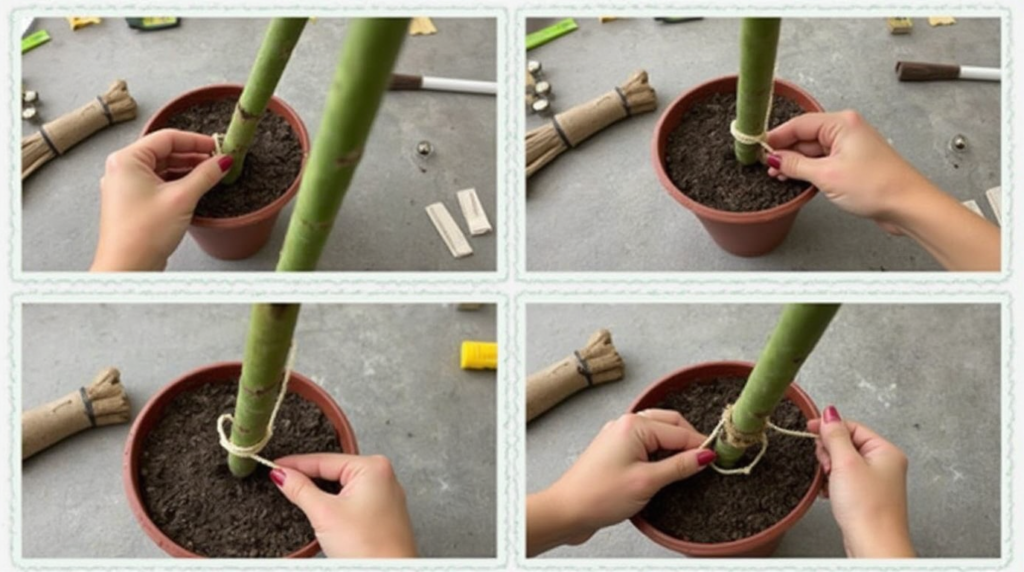
Choosing the Right Size and Material for the Pole
Selecting the appropriate moss pole for plants requires attention to both size and material. Choose a pole that is tall enough to support future growth but not so large that it overwhelms the plant. Natural materials like sphagnum moss or coconut coir are excellent for retaining moisture and encouraging aerial roots to anchor. For heavier climbers, ensure the pole is reinforced with a sturdy core, such as bamboo or PVC. Smaller plants thrive with compact poles, while larger species may require extendable options. Regularly check the pole’s stability and moisture levels to maintain an ideal environment for climbing and healthy vertical growth.
Proper Installation and Placement in the Pot
Installing a moss pole for plants correctly is vital for optimal growth and stability. Begin by positioning the pole in the center or rear of the pot, ensuring it doesn’t interfere with the plant’s root system. Secure the pole by firmly embedding its base into the soil, adding extra substrate if needed to prevent tilting. Gently guide the plant’s stems toward the pole, fastening them with soft ties or plant clips to avoid damage. Ensure the pole’s height aligns with the plant’s growth trajectory. Place the pot in a location with suitable light conditions to promote healthy climbing and development.
Caring for Plants with Moss Poles
Regular care ensures thriving growth for plants supported by a climbing pole. Maintain pole moisture to encourage aerial root attachment, adjust ties as needed, and provide proper light and nutrition.
Keeping the moss pole moist for aerial roots
Maintaining moisture in a moss pole for plants is crucial for supporting aerial root development. Regularly mist the pole to simulate a plant’s natural tropical environment. Ensure even hydration by using a spray bottle or soaking the pole occasionally. Consistent moisture allows roots to attach firmly, promoting stability and vertical growth. Avoid over-saturation, which can lead to mold or root rot. Incorporate distilled or rainwater to prevent mineral buildup that may hinder root attachment. Monitoring the pole’s dampness ensures a thriving, healthy plant while mimicking the humid conditions climbers naturally crave. Proper moisture management is key to optimal growth and aesthetics.
Regular Pruning and Training for Healthy Growth
Regular pruning and training are vital for maintaining the health and shape of plants and climbing a moss pole for plants. Trimming dead or overgrown foliage encourages new growth and prevents energy waste. Use clean, sharp tools to make precise cuts, promoting quick recovery. As vines develop, gently guide them toward the moss pole for plants, securing them with soft ties or plant clips to avoid damage. Regularly assess growth patterns to prevent overcrowding and ensure even light exposure. Controlled pruning not only supports aesthetic appeal but also fosters robust and balanced growth, creating a thriving, visually stunning plant display.
Common Mistakes to Avoid
When using a moss pole for plants, avoid overwatering or neglecting to secure vines properly. Incorrect pole placement and failure to maintain moisture can hinder healthy climbing and overall plant vitality.
Overlooking Plant Preferences
Ignoring a plant’s specific needs when introducing a moss pole for plants can lead to stunted growth and poor health. Not all species benefit from vertical supports, as some prefer sprawling rather than climbing. Additionally, overlooking light, humidity, or soil requirements may stress the plant, making it unable to establish its aerial roots on the pole. It’s essential to research each variety’s climbing tendencies and ensure the plant support pole for plants aligns with their natural growth habit. Regularly monitor the plant’s response to the pole, adjusting care routines as needed to foster robust, healthy development and thriving foliage.
Improper Moss Pole Maintenance
Neglecting proper care of a moss pole for plants can hinder its effectiveness and impact plant health. A dry plant support pole fails to support aerial root attachment, reducing nutrient absorption and climbing ability. Regularly mist the pole to maintain adequate moisture, which encourages roots to anchor and thrive. Additionally, ensure the pole is securely positioned to avoid instability that could damage the plant. Over time, replace deteriorated or compacted moss to sustain its functionality. Ignoring these maintenance practices can result in stunted growth and poor foliage. Consistent upkeep of a moss pole for plants ensures healthy and vigorous development.
Conclusion
Elevate your indoor jungle with the strategic use of a moss pole for plants. These poles encourage vertical growth, creating a lush, cascading aesthetic. Ideal for climbers like Pothos and philodendrons, plant support poles mimic natural habitats, promoting healthier foliage and striking displays. Transform your space into a vibrant, verdant sanctuary effortlessly.
Choosing the right plants for your space is essential for long-term success. Start by selecting species that naturally thrive in your home’s lighting and humidity conditions. For climbers, a moss pole for plants is a great tool, helping to promote vertical growth and enhance their natural beauty. Regularly assess their needs, from watering schedules to pruning practices. Provide the necessary nutrients and ensure proper air circulation. Keeping a watchful eye on pests and adjusting the environment as needed will keep your plants vibrant and flourishing. By creating the ideal habitat, you’ll cultivate a thriving, healthy indoor garden
FAQ
Are moss poles good for plants?
Yes, plant support poles promote vertical growth, enhance stability, and help plants maintain their natural climbing habits for optimal health.
Do I soak moss pole before using?
Yes, soaking a moss pole before use enhances moisture retention, creating an ideal environment for aerial roots and healthy plant growth.
What can I use instead of a moss pole?
Bamboo stakes, trellises, or coco coir-wrapped poles serve as excellent alternatives to a plant support pole for climbing plants.
What to use to attach plants to a moss pole?
Soft ties, velcro strips, or garden tape are ideal for gently securing plants to a plant support pole without damage.
How long does a moss pole last?
A well-maintained plant support pole, crafted from durable moss, can last several years, depending on humidity and care practices.
How do you train a plant to grow on a moss pole?
To train a plant to grow on a plant support pole, gently secure the stems with soft ties. Over time, encourage upward growth by repositioning them as needed.

